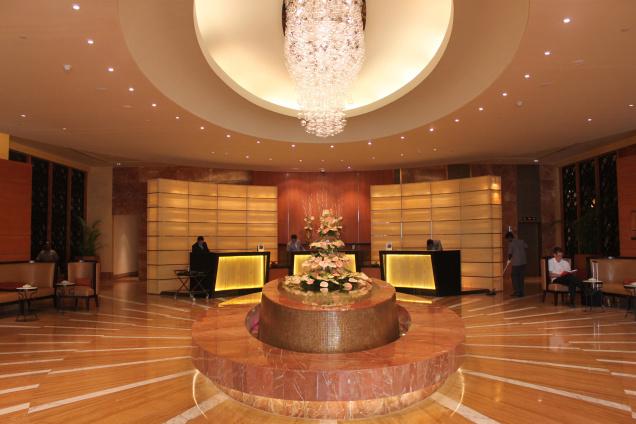
The Vivanta by Taj Surya, Coimbatore
The Taj brand’s decision to categorise its properties, covering the spectrum from upper upscale to budget, has been especially useful in times of recession.
Amidst an impatient and noisy crowd eager for his attention and, of course, his sound bites, Raymond N. Bickson’s unhurried voice had to sometimes struggle to make itself heard. It was the day of the launch of the Vivanta by Taj property in Coimbatore last week.
“This is our 22nd Vivanta by Taj property and the third in the last one year,” he said, over a cup of tea.
The global economic turmoil in the last few years has hit many businesses hard. The hospitality industry, particularly at the high end, is in a shambles.
Hotels have not been able to hold on to room rates since 2008. Occupancy has dropped. The national average has been hovering at 50-60 per cent.
Bickson, in his 10th year at the helm of Taj Hotels and Resorts, says, “For us, the growth came from the budget, upscale and upper upscale markets.”
Thanks to his initiative, Taj rolled out its brand architecture five years ago, segmenting the mono-brand Taj into four different brands for different markets, with the launch of its first Vivanta in Bangalore.
Besides consolidating its products under the new brand architecture, the company has also been communicating the brand specifications clearly to its guests. Taj, one of the most visible brands, was associated with all properties across categories.
“It was confusing. We wanted the brand Taj to represent only luxury. Hence the new brand architecture,” he explained earlier. The success story of the brand architecture exercise is now a Harvard case study, he says.
It has been extremely difficult since 2008 considering the recession in source markets, terrorism in the region and high inflation – particularly food inflation, mounting tremendous pressure on cost. However, for Taj, thanks to a remarkable growth in domestic travel, the budget and upscale categories really grew, driving the average room rates and RevPAR (revenue per available room) in these markets. Segmenting has really helped Taj cash in on the trend.
“The proof of the pudding is in the eating. Our Ginger (budget hotel brand), Gateway (upscale brand) and Vivanta by Taj (upper upscale brand) properties were doing really well,” he says adding, “That’s precisely where all the growth came from.”
The room inventory in India has more than doubled from 65,000 rooms in 2003 to 130,000 rooms today. Particularly in the last two-three years, there have been a lot of new players and new properties coming up across the country.
Taj itself opened 14 Gateway hotels, besides three Vivanta properties, in the last 26 months.
Notwithstanding the economic downturn, “we had to focus on our growth agenda, consolidating our brands under the new architecture. We have aggressive plans for further expansion in the domestic and overseas markets as well,” says Bickson.
Taj currently has 109 hotels (of which 16 are outside India) under four brands – 27 luxury hotels under the Taj brand, 23 Vivanta by Taj; and 10 upper upscale properties in India (which may soon be brought under the Vivanta umbrella; 25 Gateway Hotels and Resorts across India and a chain of 24 Ginger hotels.
It has close to 50 hotels under various stages of development in India and abroad. In the next couple of weeks it will launch two Vivanta properties in Hyderabad and Bekal in Kerala. Hotels in Madikeri (Coorg), Dwaraka and Gurgaon are also planned for the year.
It is also launching its 17{+t}{+h} overseas property, in Morocco, in the next few months, and the next one in Beijing. The pipeline is longer. “By 2015, we will have at least 150 properties in our fold,” he says.
Bickson believes that to compete with multinational brands effectively, Taj needs to have a considerable number of properties in source markets and other global destinations. It has half-a-dozen hotels planned for China alone.
“We are very excited about the Chinese market, and the Taj brand is well recognised there,” he says. Paris, London, Frankfurt, Zurich, Melbourne, Singapore, Brazil, Dubai, Abu Dhabi and sub-Saharan countries are also on its radar. However, he said, the growth outside India will mostly be through the asset-light model, either management contracts or property leasing. “At best, we may go in for partial ownership deals.”
This will enable Taj to achieve its target revenue ratio of 50:50 from its domestic and international businesses. Currently, it’s at 70:30.
To facilitate smooth sailing, “we need to have a good balance sheet, and in the last three years we managed to lower our debt-equity to 0.6:1 from 1.2:1 earlier,” he said.
So, is the focus only on expanding Vivanta’s footprint? “No, we are pretty much focused on our Gateway and Ginger line-up too.” In fact, the company is proposing another brand to occupy the space between Ginger and Gateway. There is a big gap between the two price points of Rs 2,500 and Rs 6,000.
“We are seriously considering another brand there in the next two to three years, before any of the foreign brands go and put one of their brands in these markets,” he said. Being in the industry for more than a century, “we want to be the first mover in that space”.
On the challenges the industry faces in India, he said the Government should facilitate business growth by simplifying processes and formalities. For example, it’s very cumbersome to set up a property here. “You need 120 permits to start a hotel in India, whereas in Singapore you need only 11 permits.”
source: http://www.TheHinduBusinessLine.com / Features> Brandline / by R. RaviKumar / January 2012

